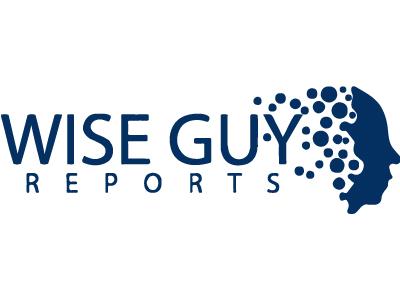Tactical Hf Radio Market Overview:
The tactical HF (High Frequency) radio market is a critical component of modern military and defense communications systems. Tactical HF radios are designed for short to medium-range communication, providing reliable and secure voice and data transmission in dynamic operational environments. These radios utilize HF bands, typically ranging from 3 to 30 MHz, allowing for long-distance communication, even in areas with limited or no infrastructure. The importance of tactical HF radios is underscored by their ability to operate in diverse environments, including remote locations and hostile terrains, making them indispensable for military operations, disaster response, and humanitarian missions.As of 2024, the Tactical Hf Radio Market Industry is expected to grow from 4.07(USD Billion) in 2024 to 5.7 (USD Billion) by 2032. The tactical hf radio Market CAGR (growth rate) is expected to be around 4.29% during the forecast period (2024 - 2032). The growth of this market is driven by the increasing demand for reliable communication systems in military applications, coupled with advancements in radio technology and the growing need for interoperability among allied forces.
Get a sample PDF of the report at –
https://www.wiseguyreports.com/sample-request?id=546889
Competitive Analysis:
The competitive landscape of the tactical HF radio market is characterized by the presence of several key players that are actively investing in research and development (R&D) to innovate and enhance their product offerings. Major companies such as Harris Corporation (now L3Harris Technologies), Thales Group, Rockwell Collins (now part of Collins Aerospace), and Codan Limited are leading the market with their advanced tactical HF radio solutions. These organizations focus on developing radios that offer improved performance, enhanced features, and greater ease of use to meet the evolving demands of military and defense sectors.Strategic partnerships and collaborations are common among industry players, allowing companies to leverage each other's strengths and expand their market reach. For instance, collaborations between radio manufacturers and technology providers facilitate the integration of advanced technologies, such as software-defined radio (SDR) capabilities, into tactical HF radios. Additionally, mergers and acquisitions are prevalent as companies seek to enhance their technological capabilities and expand their product portfolios, ensuring competitiveness in an increasingly complex market.
Market Drivers:
Several key drivers are propelling the growth of the tactical HF radio market. One of the primary drivers is the increasing need for reliable communication systems in military operations. As armed forces across the globe seek to enhance their operational effectiveness and situational awareness, the demand for robust and secure communication solutions, particularly in remote and challenging environments, is rising. Tactical HF radios provide the necessary capabilities to maintain effective communication under such conditions, making them essential for military missions.Another significant driver is the advancement of radio technologies. The development of software-defined radios (SDRs) has revolutionized the tactical HF radio market, allowing for greater flexibility, interoperability, and enhanced performance. SDRs enable users to reconfigure radio settings and functionalities through software updates, ensuring that tactical HF radios can adapt to changing mission requirements and communication protocols.Moreover, the growing emphasis on defense modernization and military spending in various countries is contributing to market growth. Governments are increasingly investing in upgrading their military communication systems to enhance operational capabilities. This trend is particularly evident in regions with rising security concerns, where nations are prioritizing the acquisition of advanced communication technologies, including tactical HF radios.
Market Restraints:
Despite the positive outlook for the tactical HF radio market, certain restraints could hinder its growth. One primary challenge is the high cost associated with advanced tactical HF radio systems. While the benefits of these radios are clear, the initial investment required for procurement and implementation can be a barrier for some military organizations, particularly in developing countries with limited defense budgets.Additionally, the complexity of integration and operation can pose challenges for end-users. Effective training is essential to ensure that military personnel can operate tactical HF radios efficiently. This requirement for specialized training and potential operational disruptions during the transition to new systems can deter some organizations from adopting advanced communication technologies.Furthermore, regulatory challenges related to frequency spectrum allocation can impact the growth of the tactical HF radio market. Different countries have varying regulations regarding the use of HF bands, which can create barriers to entry for manufacturers and complicate the deployment of tactical HF radios in certain regions. Navigating these regulatory environments can be complex and time-consuming for companies operating in this market.
Segment Analysis:
The tactical HF radio market can be segmented based on type, application, and end-user. In terms of type, the market includes man-portable radios, vehicle-mounted radios, and base station radios. Man-portable radios are designed for individual soldiers or small units, providing flexibility and mobility in the field. Vehicle-mounted radios are used in military vehicles, offering robust communication capabilities in mobile operations. Base station radios are employed for command and control operations, providing centralized communication support.From an application perspective, the market encompasses various sectors, including military, paramilitary, and humanitarian organizations. The military segment is witnessing significant growth due to the increasing demand for secure communication systems in combat and operational scenarios. The paramilitary sector, including police and border security forces, is also adopting tactical HF radios for effective communication during operations. Additionally, humanitarian organizations utilize tactical HF radios during disaster response and relief missions, where reliable communication is crucial.In terms of end-users, the market serves both government and commercial sectors. Government users include armed forces, law enforcement agencies, and disaster response organizations, while commercial users encompass private security firms and organizations involved in humanitarian aid.
Browse a Full Report –
https://www.wiseguyreports.com/reports/tactical-hf-radio-market
Regional Analysis:
Geographically, the tactical HF radio market is segmented into North America, Europe, Asia-Pacific, Latin America, and the Middle East & Africa. North America currently dominates the market, driven by the presence of major defense contractors and a strong emphasis on military modernization. The United States is a key contributor to market growth, with significant investments in advanced communication technologies for its armed forces.Europe is also witnessing significant growth in the tactical HF radio market, fueled by the increasing demand for military communication solutions and the rising geopolitical tensions in the region. Countries such as Germany, the United Kingdom, and France are at the forefront of this growth, with ongoing defense modernization programs aimed at enhancing communication capabilities.The Asia-Pacific region is expected to exhibit the highest growth rate during the forecast period. Rapid military modernization efforts, coupled with rising defense budgets in countries like China, India, and Japan, are driving the demand for tactical HF radios. Additionally, regional tensions and security concerns are prompting nations to prioritize the acquisition of advanced communication technologies.
The tactical HF radio market is poised for substantial growth, driven by the increasing need for reliable military communication systems, advancements in radio technologies, and rising defense spending. While challenges such as high costs and regulatory complexities exist, the overall outlook remains positive. Companies operating in this market must focus on innovation and strategic partnerships to remain competitive and meet the evolving needs of military and defense organizations. As technology continues to advance and the demand for effective communication solutions grows, the tactical HF radio market is set to play a crucial role in enhancing operational capabilities across various sectors.
About US:
Wise Guy Reports is pleased to introduce itself as a leading provider of insightful market research solutions that adapt to the ever-changing demands of businesses around the globe. By offering comprehensive market intelligence, our company enables corporate organizations to make informed choices, drive growth, and stay ahead in competitive markets.
We have a team of experts who blend industry knowledge and cutting-edge research methodologies to provide excellent insights across various sectors. Whether exploring new market opportunities, appraising consumer behavior, or evaluating competitive landscapes, we offer bespoke research solutions for your specific objectives.
At Wise Guy Reports, accuracy, reliability, and timeliness are our main priorities when preparing our deliverables. We want our clients to have information that can be used to act upon their strategic initiatives. We, therefore, aim to be your trustworthy partner within dynamic business settings through excellence and innovation.
Contact:
WISEGUY RESEARCH CONSULTANTS PVT LTD
Office No. 528, Amanora Chambers Pune - 411028
Maharashtra, India 411028
Sales: +91 20 6912 2998

